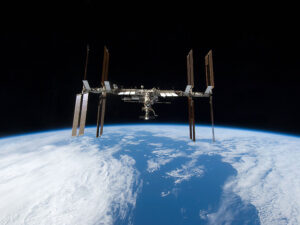🛰️ The International Space Station: Humanity’s Engineering Marvel in  Orbit
Orbit
At 250 miles above Earth, circling the planet at 17,500 mph, the International Space Station (ISS) is more than just a spacecraft—
it’s a floating laboratory, a symbol of international cooperation, and one of the most ambitious engineering projects in history.
Let’s break down what makes this orbiting outpost so extraordinary. 👇
🌍 Speed & Sunrises: Life at 17,500 MPH
The ISS completes one full orbit around Earth every 90 minutes.
That means astronauts onboard witness 16 sunrises and 16 sunsets every single day. ☀️🌒
It’s the ultimate frequent flyer lifestyle—only at hypersonic speeds. ✈️💫
🧠 Built in Space, Piece by Piece
The ISS isn’t one spacecraft—it’s a modular space station, assembled in orbit over the course of more than 30 missions.
-
Over 100 components joined together in microgravity
-
The structure spans the length of a football field
-
Weighs more than 900,000 pounds
Its construction is a testament to precision, perseverance, and engineering excellence.
🌐 A Global Effort
The ISS is a collaboration between five space agencies:
NASA (USA), Roscosmos (Russia), ESA (Europe), JAXA (Japan), and CSA (Canada). 🌎
Despite cultural and political differences, these agencies have worked side-by-side to create a continuous human presence in space since November 2000.
The ISS is living proof that when nations collaborate, humanity can reach the stars.
🔬 A Lab Like No Other
Every day, astronauts aboard the ISS conduct experiments in:
-
Medical research
-
Materials science
-
Fluid dynamics
-
Space agriculture
-
And more…
Microgravity offers a unique environment that allows scientists to explore questions we can’t answer on Earth.
💬 What Would You Send to Space?
If you had the chance to send one experiment to space, what would it be?
Something to cure disease? Test new materials? Or maybe something completely out of this world? 🌌
👇 Drop your ideas in the comments below—we’d love to hear your thoughts!

